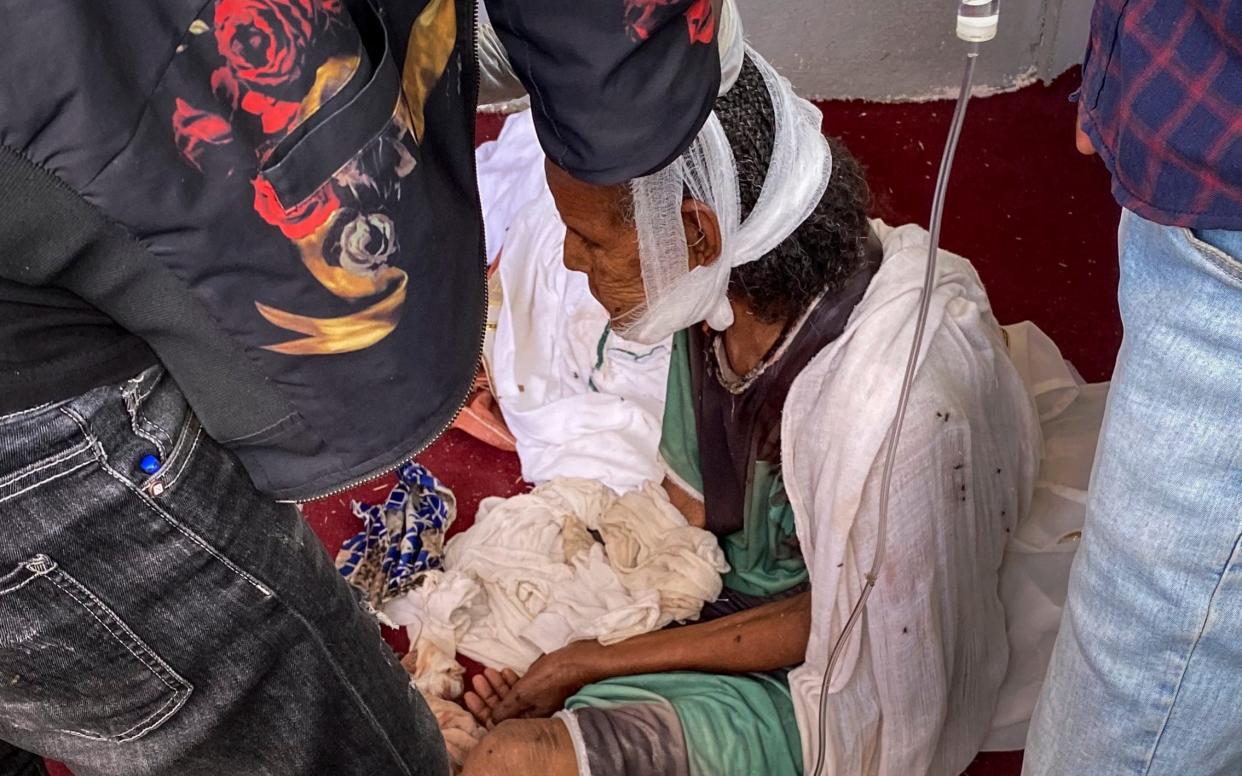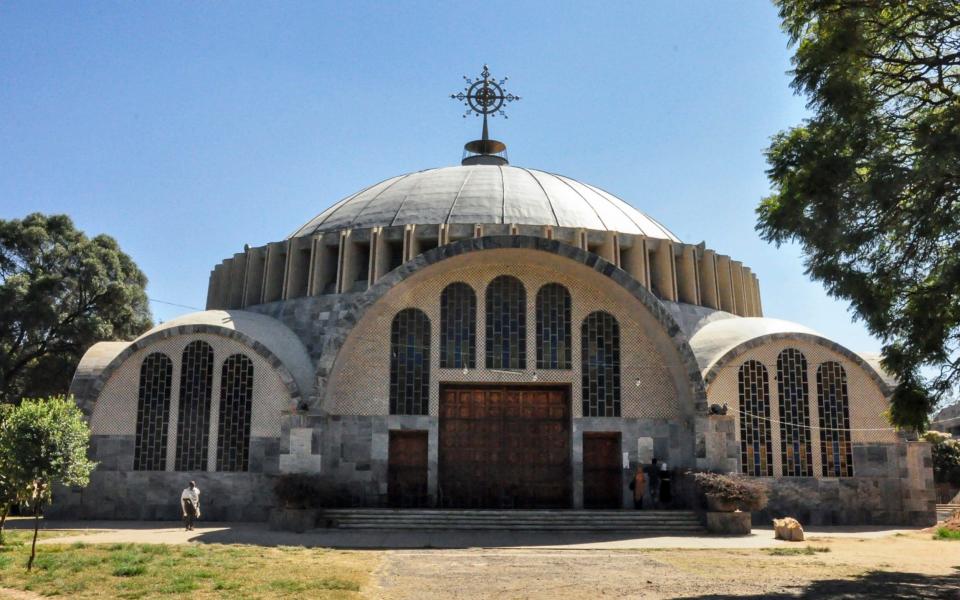Eritrean troops killed 'hundreds' in Ethiopia massacre, Amnesty claims

Hundreds of civilians in Ethiopia’s war torn Tigray region were methodically hunted down and killed by soldiers from neighbouring Eritrea, a damning new report has revealed.
Amnesty International claims that Eritrean soldiers converged on residential areas of Axum on November 28, with orders to immediately gun down males of fighting age.
Knocking on doors and breaking down others, scores were killed in front of their families, the human rights group alleges.
Soldiers also targeted those they encountered as they rode through the city’s streets atop tanks, with the rampage leaving the streets of the city of 70,000 residents flowing with blood.
Included in the 25 page report is testimony from more than 40 witnesses of the massacre, which took place in the holy city of Axum, home of the 4th century St. Mary of Zion church which many Christians believe houses the Biblical Ark of the Covenant.

“Starting (at) 2 pm, the Eritrean soldiers started going home to home and killing men,” a university professor told Amnesty International. “When I heard that they were killing men, I ran out of the city.”
“I saw a lot of dead on the street,” another witness is quoted as saying. “Even my uncle’s family. Six of his family members were killed. This was in the middle of the city, not the entrance or in surrounding villages.”
Ethiopia’s war in Tigray began on November 4 and resulted in Ethiopian and allied Eritrean soldiers ousting forces loyal to the rebellious Tigray regional government from the city Mekelle after weeks of brutal fighting. The war has left thousands dead and more than two million internally displaced.
Despite claims by Ethiopia’s Nobel Peace Prize winning Prime Minister Abiy Ahmed that his forces had taken precautions to prevent civilian casualties, mounting reports implicate them in extrajudicial killings, indiscriminate shelling, and rapes.
Last week, The Telegraph obtained a graphic video showing Ethiopian troops taunting survivors of a mass slaughter of 40 civilians near a Tigray monastery. A communications blackout and the barring of journalists from the region rendered verification of accounts from the region extremely difficult and led to atrocities, such as the Axum massacre, going largely underreported.
The report also revealed that Ethiopian forces shelled Axum indiscriminately starting from November 19, before being reduced to observers during the massacre. A survivor explained how with time, Eritrean soldiers improved their killing efficiency and thought up resourceful ways to save bullets.
“They only shot twice for the six people,” said the man who witnessed summary executions on November 29. “They shot three people with one bullet. The first and second fell dead. The third was injured, about to fall. They shot him a second time and killed the three others with the same bullet. They were lined up perfectly. They shot them with a Bren (light machine gun).”
The killings went on unabated for almost 24 hours, and during a lull on the 29th, Eritrean soldiers shot at residents who ventured out to collect decomposing bodies in the streets.
Burials were finally permitted on November 30, and residents conducted funeral processions and mass burials at church courtyards across the city. Satellite imagery obtained by Amnesty International reveals swathes of the church compounds’ freshly dug earth and appears consistent with mass graves.
The bodies of 450 people were said to have been buried at just one of the churches. A survivor had told the Associated Press that 800 were killed. But Axumawit Berhane,* who lost three relatives in the slaughter, told the Telegraph that there were plenty unaccounted for, and that the death toll likely approached a thousand.
“It’s still a nightmare for our family,” she explained to the Telegraph. “I feel like I’m no longer alive, I just feel numb. My niece hasn’t recovered from the trauma and has developed a heart condition.”
Berhane added that Eritrean soldiers looted everything from vehicles and electronics to food. Satellite images show that factories and warehouses had their entrances blasted open. Banks, universities and even bakeries are said to have not been spared.
The war and pillaging have left some 4.5 million people across the war affected region in need of emergency assistance. Despite the dire situation, Ethiopia remains largely hesitant to allow humanitarian access to Tigray.
*Interviewee’s name changed to conceal identity.

